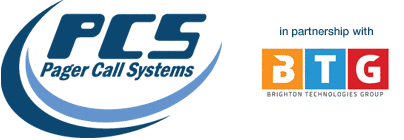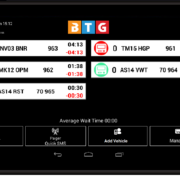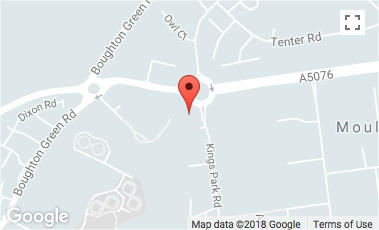Caterpillar UK – Streamlining Logistics Operations: Using Pagers to Call Drivers to Loading Bays
Introduction
In the fast-paced world of logistics, every second counts. Efficient coordination of drivers and resources can make the difference between meeting delivery deadlines and incurring costly delays. For many companies, the technology of pagers interfaced with queuing software has emerged as a surprisingly effective solution to streamline operations and enhance productivity. In this case study article, we will explore how Caterpillar UK successfully implemented pager systems to call drivers to loading bays, resulting in significant improvements in efficiency, communication, and overall operational excellence.
The Challenge
Caterpillar UK’s Leicester production site, faced several challenges in their daily operations. One of the most pressing issues was the inefficient communication process used to call drivers to loading bays. The existing system relied heavily on an outdated message board system, which often led to communication breakdowns and wasted time. Drivers struggled to see the message board system, and valuable minutes were lost trying to reach them. The company realised the need for a more reliable and instant communication method to address these issues.
As can be the case with many companies network & data security is a major consideration when evaluating systems and if possible the company wanted to utilise a system that would not need to connect to the company computer network.
The Solution
After extensive research and evaluation of various communication solutions, Caterpillar UK contacted Pager Call Systems.
Pager Call Systems recommended the Driver Page system with screen based queuing software for operators. The decision was based on several key advantages that Driver Page offered over other methods:
- Network & Data Security: Pager Call Systems provided an isolated network for connectivity between the Touch Screens, Paging Transmitters & Pagers. This was a customised solution built by the technical team at Pager Call Systems for the Caterpillar project.
- Reliability: Pagers are known for their reliability, even in areas with weak mobile network coverage. This ensured that drivers could be reached consistently, reducing the risk of communication breakdowns.
- Instantaneous Communication: Pagers provide an immediate alert to the recipient, allowing drivers to respond promptly to loading bay requests.
- Clarity in Noisy Environments: Unlike mobile phones or walkie-talkies, pagers provided clear and audible messages even in noisy loading bay & yard environments.
- Speed of Deployment: Driver Page could be implemented at site in days rather than months. Utilising an isolated network system designed by Pager Call Systems would eliminate the need to use the company’s network.
- Cost-Effective: Driver Page was a cost-effective solution compared to investing in more complex communication systems.
Implementation
Caterpillar UK introduced Pager Call Systems Driver Page for drivers and loading bay personnel in two separate loading bay areas at the Leicester site. The process involved the following steps:
- Procurement: After extensive research Caterpillar arranged a demonstration of the Driver Page System at their site and Pager Call Systems conducted range testing on site to ensure full site coverage would be achieved by the specified equipment.
- System implementation: Pager Call Systems worked closely with the technical team at Caterpillar UK to ensure trouble free installation and implementation of the system.
- Training: Drivers and loading bay personnel were trained on how to use the Driver Page system effectively. This included receiving and acknowledging messages, understanding different codes for various instructions, operating the touch screen queuing system and producing wait time reports.
- Integration: The pager system was seamlessly integrated into the company’s existing communication & vehicle flow processes. Staff were given access to dedicated devices, and transport office personnel were equipped with devices to send messages.
- Testing: The pager system underwent rigorous testing to ensure it could effectively replace the existing communication methods without disruption.
Results
The implementation of a Driver Page system yielded impressive results for the Caterpillar UK:
- Improved Efficiency: Drivers could be called to loading bays instantly, reducing the waiting time and increasing overall productivity.
- Enhanced Communication: Pager messages were clear and easily understood, even in noisy environments, resulting in fewer errors and misunderstandings.
- Visibility: With the Driver Page System staff can see at a glance the number of vehicles waiting for loading bays, time waiting along with vehicles on bays.
- Reduced Delays: The new system significantly reduced the likelihood of delays caused by communication breakdowns.
- Cost Savings: The company experienced cost savings as Driver Page was more affordable than alternative communication solutions.
Conclusion
In an industry where efficient communication is paramount, the adoption of the Driver Page system to call drivers to loading bays has proven to be a game-changer for this Caterpillar UK. By embracing this reliable and cost-effective technology, they were able to streamline operations, reduce delays, and improve overall efficiency. This case study highlights the potential of simple technology to address modern logistical challenges, underscoring the importance of innovation in improving business processes.
Find out more Driver Page System









